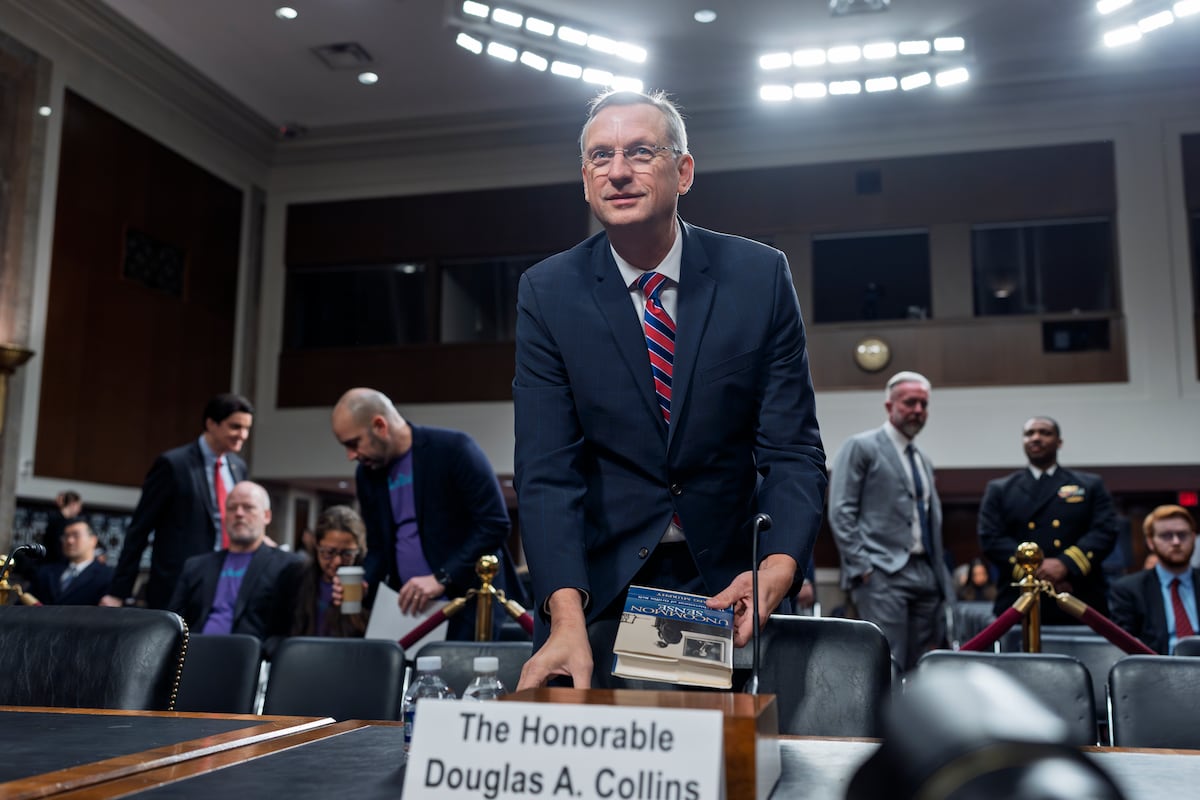In 2008, I left Balad Air Base in Iraq with the knowledge of what I feared would be one of the signature concerns to face my generation of veterans. Though the base was nicknamed “Mortaritaville” for the daily enemy attacks, its sprawling open-air burn pit — roughly the size of 10 football fields — had the potential of causing a significantly greater health hazard for the hundreds of thousands who’d deployed there.
These perpetually smoldering burn pits were so bad that flightline operations had to be rerouted. I kept one of the base’s five-day weather forecast. It accurately predicted “smoke/haze” for the entire week. People were already getting sick from the exposures we now know will continue to cast a long shadow in terms of the illnesses they cause — many chronic and many fatal.
That same year that I leaked the story to Kelly Kennedy with Military Times before writing about it for the New York Times “Home Fires” series, our current Veterans Affairs Secretary, Doug Collins, deployed as a chaplain to Balad. There, he served the spiritual needs of those who worked and were treated at the Air Force Theater Hospital. He counseled countless men and women who’d been sent into harm’s way and were wounded. He prayed over those who had made the ultimate sacrifice. And, like everyone else on that base, he was exposed to hundreds of tons of burning waste that America’s military and civilian leaders knew could have chronic and enduring consequences to their health.
Fortunately, for myself, Collins and hundreds of thousands of other veterans who’d been exposed, the PACT Act was signed into law in 2022. The hard-fought legislation helped to expedite justice by presuming veterans’ service connection for certain illnesses linked to toxic exposures.
In less than three years since its passage, more than 2.1 million claims for benefits due to toxic exposures have been adjudicated and more than 436,000 additional veterans are currently enrolled in VA health care. Although it took almost two decades for the federal government to acknowledge that veterans exposed to burn pits had been harmed — which is less than the average of 34 years it has historically taken to establish a presumptive condition for an exposure — we’re getting closer than in past generations to keeping promises to the men and women who answer the call to serve.
In spite of increases in demand for care and benefits, the Trump administration has used executive orders to cut the number of VA employees. Then a leak exposed plans for a reduction in force back to 2019 VA staffing levels, which was before the PACT Act provided millions of toxic-exposed veterans with earned benefits. Although the “how” of these cuts remains a guarded mystery about which veterans have been left in the dark, we know Secretary Collins’ goal is to cut around 72,000 staff members, which is 15% of the department’s workforce. Among those at risk of losing their jobs are around 20,000 veterans who bring key insights into our health and benefits system.
Unlike previous administrations who sought and welcomed feedback from veteran stakeholders — the same organizations who (along with Jon Stewart) ultimately carried the PACT Act and other key policy victories for veterans across the finish line — the administration has offered no opportunity for public comment and scant details on its plans for transformation.
Instead, we are being promised a more efficient VA and being told repeatedly that care and benefits will not be impacted.
The secretary, who spoke of sleeping next to a burn pit in his confirmation hearing, has asked his fellow veterans to trust him. Cutting tens of thousands of positions while maintaining or even improving services for veterans in need sounds like a godsend to veterans and taxpayers alike. But we’re talking about cuts at a time when the need is on the rise. And care is already being affected, with interruptions in research impacting veterans participating in cancer trials. Ultimately, we’re being asked to blindly trust the same government that’s poisoned us over the course of generations.
Many veterans are worried. Some have already been fired from the VA or other agencies and others are service-disabled veterans with small businesses that have been devastated by cuts to government contracts. They’re contacting organizations like DAV to vent their frustration and anxiety. But more is likely to come. And we’re not sure what to tell them.
President Reagan’s repeated mantra in nuclear negotiations was to “trust, but verify.” The veterans community is coming out of the secretary’s first 100 days with no way to verify his veracity. In the coming months, we will likely witness a sea change at the VA. But the details on how those changes will impact veterans are hazy, not unlike the downwind side of a burn pit — and, paired with the lack of transparency we’re experiencing at the VA, similarly concerning for the potential long-term impact to the veterans community.
Dan Clare is the chief communications & outreach officer for DAV (Disabled American Veterans). He is a former Marine and Air National Guardsman who served with the 332nd Air Wing at Balad Air Base during the Iraq War. Veterans and spouses can participate in DAV’s survey by visiting dav.org/protect.
Read the full article here





